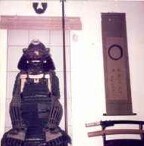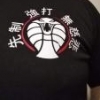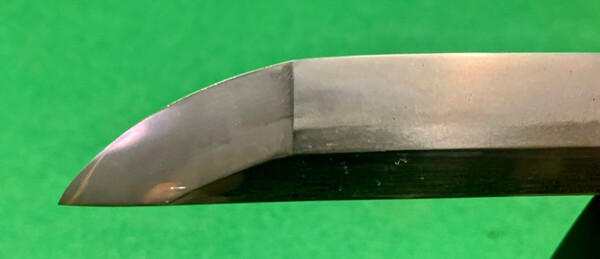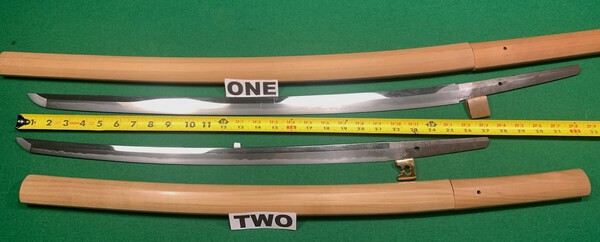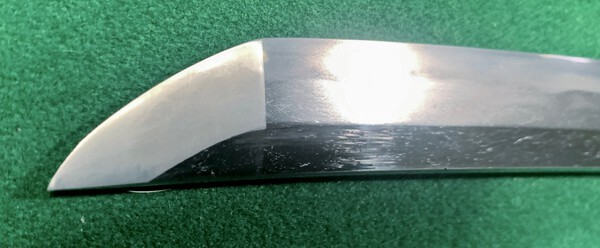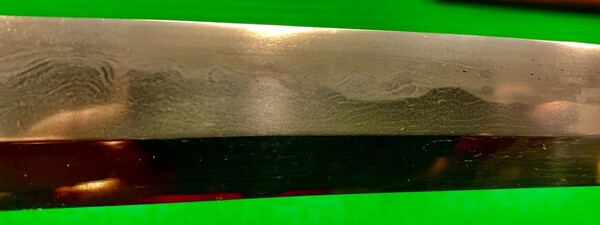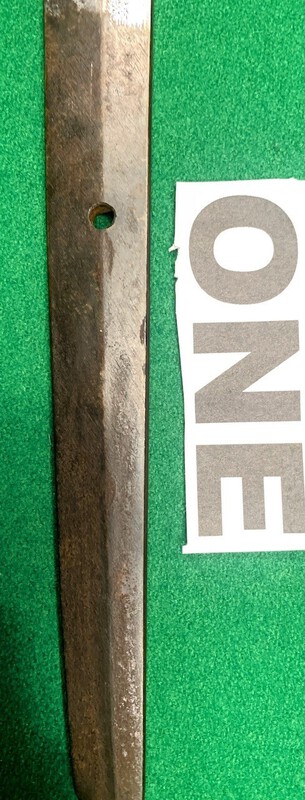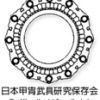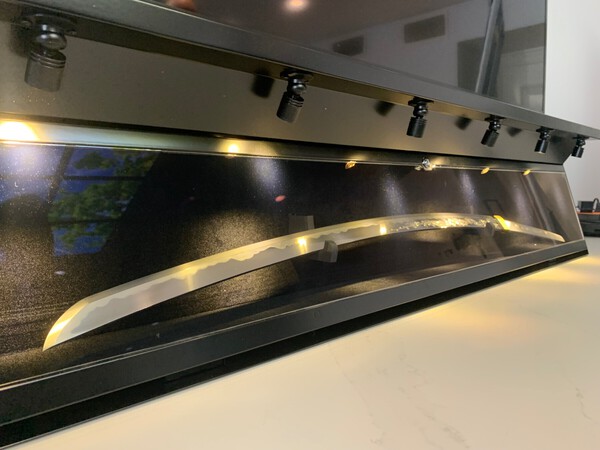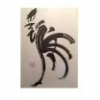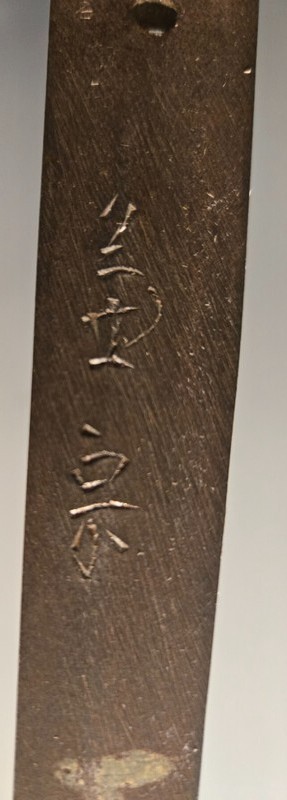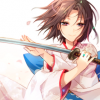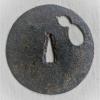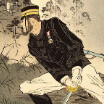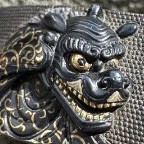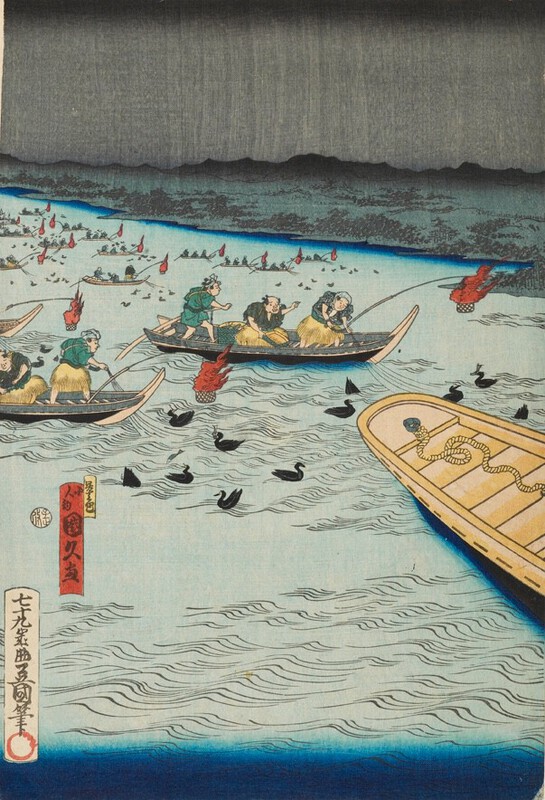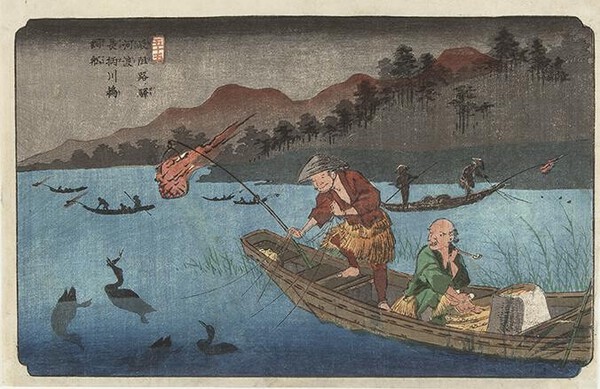Leaderboard
Popular Content
Showing content with the highest reputation on 06/16/2025 in all areas
-
6 points
-
I don't like to generalize, but these blue-background, cheap auction swords are very, very unlikely to provide you with a sword that is worthwhile to invest in restoration. Cheap swords like this are being sold at auction by dealers on eBay who know what they are selling, and are selling pieces cheaply for a reason. Like the "Original Old BIG Japanese Tachi Sword Signed Hamon Horimono" we discussed earlier, these are items which may look cheap on the surface, but if you look closely the underlying mess of issues makes it clear why the price is what it is and that these are not good candidates to invest in. You are much better off waiting and buying a kai-gunto which already has a blade in good quality Japanese restoration, and if you are patient you are likely to find one for less than it would cost to have a katana polished (along with new shirasaya and all the other restoration-related expenses).4 points
-
The original picture shows roughness, which is very easily attributed to rough forging, rather than casting. If anything, casting a liquid metal might leave a flatter surface, albeit with maybe a sand-like appearance. But, I may have mentioned this somewhere in the 20 pages here, and I am certainly not the only one: we cannot judge if a tsuba is cast iron from photos alone.4 points
-
I have been collecting edged weapons for over 60 years beginning with some bayonets taken back from WW2 by relatives. Searched for more bayonts from all over the world, for 25 years then Military Officers Swords, German Daggers, Edged weapons from many countries and then picked up my first Nihonto in the mid 80's. Not many dealers around and E-bay didn't even exist so it was hard work getting any assortment and I became pretty well read and took what came up. I managed to acquire some nice pieces and some real dogs which I moved on and in the mid nineties sold all my non-Japanese blades to a large arms dealer, over 250 bayonets, 150 large swords, all classes of German Dress daggers etc etc. By then their were some Nihonto dealers and E-bay was not too bad intitially so added and subtracted till I now only have about 25 blades. Back in the day as I said you took what you could get and PAPERED blades were very rarely available, and when they were the prices were nuts. So - many of my first purchases were mumei and/or unpapered. Now in my mid-seventies with no relatives with any interest in Nihonto I am going to sell some of my little collection and hopefully someone will be thankful to get an antique katana of any type to appreciate and care for for the rest of this century and pass it on to another collector starting out. I am offering them for roughly the same price I paid for them as I never really thought of them as an investment but remember these were dollars from 40 years ago so their may have been a little inflation since then - or I paid too much for them back then!! Both Katana's are in shirasaya, in good polish with no defects or kizae and attractive blades in their own right. Katana # 1 Nakago: Ubu Mei : Mumei Papered; Nope Era/Age : Mid Edo period Mounts ; Shirasaya Nagasa: 26" Sori : Torii-Zori Hamon Type : Gunome Midare - and uguha Jihada : Masame Other Hataraki Visible : Flaws : None Sword Location : Canada Will ship to : Anywhere you want to pay for. Payment Methods Accepted : Pay Pal , Electronic Funds Transfer Price and Currency : 2600 USD Wakizashi # 2 Nakago: Ubu, Mei : Tadayoshi - probably Gimei but in his style and well executed. Papered; Nope Era/Age : 18th century Mounts: Shirasaya Nagasa: 21.5 " Sori : Torii-Zori Hamon Type : Jihada : O-mokume Other Hataraki Visible : Flaws : None Sword Location : Canada Will ship to : Anywhere you want to pay for. Payment Methods Accepted : Pay Pal , Electronic Funds Transfer Price and Currency : 2000 USD Thanks for taking the time to read and take a look at the photos -=4 points
-
Hi Everyone My name is Sebuh, i’ve recently gained an interest in Nihonto at the young age of 17. (Just turnt 18) After years or watching al sorts of media, seeing the Katana used and all. Guess that what’s caused my interest or, at-least planted the seed in my mind. After a few months of hiding around and obsessively reading content on Kamakura swords, my tastes have evolved. I appreciate Heian now, far far more. Late Heian to Early Kamakura seems to be my area. I’m based in New York City, Queens to be precise. Currently the only person not above the age of 40 into the hobby I think. I’ve been looking into the New York Token Kai, but a bit worried that i’d be the youngest there but i’ll make way eventually. Apologies for not introducing myself sooner, but it’s never too late. (hopefully)4 points
-
3 points
-
3 points
-
It was a very nice weekend indeed and as Oli said, it was very nice to meet some people live. Our neighbors from Germany, people from Austria, Australia, Great Britain, Japan, the states. You guys know who you are We had some good conversations and fun.3 points
-
Steve, it is not that there are no deals but rather that it takes a lot of study to identify them. I am glad to hear that you were able to return the tachi. My suggestion is to focus in a serious way on reading good references, and develop a more specific goal for what you would like to purchase. Then research the candidates that fit your goals. Looking for a "navy cheap enough to get it polished" is fairly vague and open-ended. Are you looking for a gendaito in kai-gunto koshirae, or an older sword in the same type of mountings? I would suggest not rushing, take your time to think about what you would like to collect and study legitimate examples (in books, and in-person if possible). You may find that what you thought you wanted in the beginning is not where your collecting goals end up.2 points
-
I should clarify, when I gave the feedback above I was not just saying gimei but indicating that the blade itself does not look Japanese (typical for Komonjo and similar sellers). What type of feedback are you looking for on the hamon? It is notare, and appears to be vacant of hataraki from what I can see in the photos.2 points
-
This looks much like a Komonjo-type gimei.2 points
-
Hi @jdawg221, Moving your post to the wanted to buy section. Best of luck in your search, -Sam2 points
-
The article above was written by Tanobe-sensei. He says, (my loose translation of the salient bits) Regarding Tomoshige 1st; he is said to have been either a student of Rai Kunitoshi, or a student of Kashū Sanekage. However, by looking at the the oldest extant sword believed to have been made by Tomoshige 1st (Important Art object in the Atsuta Shrine) the former claim, while not impossible from an age standpoint, seems difficult to accept judging by the style in which the sword was made. Meanwhile, the latter claim is inconsistent with the age of the sword. Indeed, judging from the work of the jiba, and from the shape of the nakago jiri being in the style of Katayama, and from the workmanship being of the kind often seen in kanmuri-otoshi blades, it seems as if it is a continuation of the Yamato tradition, and swordsmith groups coming from Yamato, such as the Uda who settled in Etchū in the Hokuriku, and Nobunaga et. al who carried on the Taima tradition in Echizen Asago, are gaining attention.2 points
-
2 points
-
Hi Zac, beautiful authentic piece, age is pretty much correct, so in excess of 200 years and counting. Multiple metals used in the inlay, the birds black colour as well as the filled hitsu-ana is shakudo an alloy of copper and gold. The pine trees in sentoku [brass]? I don't see much silver but it could be there? I do like the box with the hand typed message even with the confusion of the +/t If I were you I would keep hold of it2 points
-
Congratulations to you Jesta for bidding and winning a fine tsuba. And thank you Marius for a great initiative in securing funding for a great forum - including all Brian’s administrative work and hassle in keeping us all happy and aligned 😜 A small side donation has been made to the NMB from my side as recognition of that work. Thank you Brian 👏🏻 /Soeren2 points
-
It is very likely that the sword is fatally damaged, the kissaki has been very crudely reshaped, the natural fukura (curvature of the kissaki) removed completely and most probably the boshi is gone at this point. I don't see any indication of a naginatanaoshi here, this appears to be a o-suriage mumei katana (Shinto or earlier) but with likely fatal issues due to the amateur reshaping of the kissaki combined with non-fatal forging flaws.2 points
-
Because they are selling the fittings only, and that is how fitting are displayed, with a wooden dummy blade called a tsunagi.2 points
-
okay then! Having to delete a post or two. I'm going to leave Dan's last one up. I don't really agree with him, but do feel he is entitled to his opinion and I shouldn't edit the thread very much. It has not my favorite thread, as I find the topic very subjective over the last 25+ years. Please keep the disagreements civil as possible.1 point
-
I was also on the Expo, for first time. I was only present on Friday. One day is far too short to see everything in detail. It was very nice and i learned a lot! The dealers and personal was very friendly and we had a very good time. I am also planning to attend next year. Then for the whole weekend! Also the city Utrecht is wonderful. But the parking spaces are a disaster1 point
-
This seems to have been an interesting discussion. It was politely presented and edited so I am not sure I have fully understood and followed the discussion. I am also not sure I understand it all. Still, in collecting Japanese things - swords and guns included, the safest strategy is if avoid anything that is "unusual." But I have to add in the case of matchlocks, if something looks/seems "Japanese" but is "unusual", I have to ask what else would it be?1 point
-
1 point
-
1 point
-
Hello Sebuh, Very welcome, you'll probably find out that we are passionated and vrey young in spirit ! Have fun! Eric1 point
-
Unfortunately there is a time lag with Tanegashima alerts which arrive in my mailbox two or three days after the original post. Normally I check in here two or three times a day anyway, just to be on the safe side, but this weekend I was run off my feet. Apologies. With no images now it makes it harder to remember what was different! Was that factoid about battlefield use in an old or modern English language publication, or somewhere else? Matchlock long guns involved clever use of match cord, wound around your left forearm. To use a pistol, however, you need to wrap the cord around your right wrist, and as you extend your arm to fire, hope the string does not come loose for a misfire. On horseback (these pistols were rare and really only available to wealthy Bushi) the cord pull-away problem would be compounded with the movement. There is one famous moment at the Battle of Sekigahara when a knot of mounted Shimazu troops surrounded their lord and wishing to return him home safely, but with honour, charged right through the Tokugawa lines, discharging pistols as they went.1 point
-
Thanks, Leen! Excellent sword! Fujita Akiyoshi, Yamagata prefecture. First one of his I've seen with the kana before the number.1 point
-
1 point
-
I posted them both about the same time one in the main area and one in the netsuke etc. it was already up before you replied. I was just trying to get it out there covering more ground to get him the answer asap. That’s why if you must know.1 point
-
Normally I do not like to comment on things for sale, so in this case I merely said it was not for me. Thank you though for considering the seller, Alex. When I say 'yes', the back sight reminds me strongly of a type of fantastical gun the Japanese produced, which they called Namban-Ryu, or 'Barbarian style of gunnery'. The problem is that they were wildly decorated in order to look exotic, and I am not sure if any two were even alike. For this reason, I could see elements pointing to a viable matchlock, the side view of the pan for example, but then other decorations which I would not normally associate with Tanegashima matchlocks. Here is a page from Sawada Taira's book illustrating just two examples of the Nanban-Ryu school of gunnery. What exactly do they have in common? How much decoration do you allow, and how wild is ‘genuinely’ wild?1 point
-
The blade is signed Bishu Osafune Sukesada and dated Eisho __nen __ gatsu hi. I believe it is Eisho san nen hachi/roku gatsu hi. A day in the 6th or 8th month of the year 1506. Sue-Bizen blades with dates usually use the months 2 or 8, but this looks like it may read the 6th month of that year.1 point
-
-Thanks Spartancrest. Unfortunately there's no maker mark/signature on it so i wasnt sure what else to ask or look into. The box had the message/signature but no other markings to help. Appreciate it!1 point
-
1 point
-
1 point
-
Blades like this typically don't command much on the market. Its a mass-produced user piece from its time. Worn-down mumei muramachi blade with big flaws and out of polish. Artistic value is approximately nil, though it does have historical value as an example of what it is, not to mention it would probably still poke a hole in something just fine if needs be. Without any koshirae your market gets smaller. I have a similar one in a similar state I would let go for a hundred bucks and a beer..though you might do a little better. Please note I am not an expert and this is not financial advice.1 point
-
Sebuh, you are very welcome here! Being young is not a mistake and does not need an excuse, I think. Enjoy your time, study a lot, and have fun with what you like! All the best. Jean1 point
-
Calabrese, did I say the WABI concept has to be applied always without exception? I hope not. But there are many examples. See the YATSU HASHI below. https://tsubashi.com/product/yatsuhashi-bridge-with-irises-tsuba/ We could possibly discuss without result if there is an unfinished bridge depicted or just the idea of one. You can also read about René Magritte (Ceci n'est pas une pipe https://www.planet-schule.de/mm/nie-wieder-keine-ahnung/malerei/epochen/surrealismus ). Even detailed "finished" works of art may just give you an idea, an imagination of the real thing! Only bad work and laziness would need an excuse.1 point
-
1 point
-
Yeah, you are completely wrong. It's very obvious. Also, you need to learn the difference between hammer marks and "casting pits" which are not present on this tsuba. You also seem to think that designs of tsuba weren't spread across multiple traditions, schools and eras. How are you going to compare a tsuba with a completely different one, like they are supposed to be the same? You also don't seem to know much about tagane and semigane.1 point
-
Sorry to say this is not a legit netsuke. It is a low quality “look alike” intended for the modern market. Probably not carved in Japan.You can see the dragons scales have been fashioned using a rotary tool eg a dremmel with a small round burr rather than a sharp blade or graver. It lacks artistry and refinement. I believe this is what Piers aptly describes as a “netsuke like object”. Apologies for disappointment…..but I suspect you suspected.1 point
-
Wow, I was pretty surprised that this Masanori katana with the dragon horimono on Aoi went for only 1.3M yen. It sold a few months back on Aoi too, but WITHOUT the koshirae, for 2.0M yen. https://sword-auction.com/en/product/27081/as24102-katana-yamato-daijo-fujiwara-masanorinbthk-tokubetsu-hozon-token-2/1 point
-
Little Sori was popular during Kanbun Shinto, and later Shin Shinto.1 point
-
Hallo Jelle, I would also like to point out that it would be beneficial if you joined De Nederlandse Token vereniging (Dutch Token Society). We offer 4 yearly meetups, with lectures and the possibility to sell or trade blades. You can always join one meeting to see if it would fit your taste. You might be able to find something there that fits your needs. http://www.to-ken.nl/ Greetings, Lex1 point
-
In Japanese art there is a tradition of "utsushi" which translates as homage or emulation at its basic level. Popular designs were done over and over again but generally not as direct copies but as the new artists interpretation of the original design - at least in the best case senario. Copies have been made, some as "practice" by students/apprentices others as outright forgeries aimed at deceit. Yes there are also cast copies made in large numbers but these would not be called utsushi as they do not celebrate the art and are more about making fast money. From what I have seen almost every school of tsuba artist has had followers who make utsushi of their school or other schools master works. I would not be surprised if on some rare occasions some buyers might put in a request for some change or enhancement, there are rare signatures where the maker has included "made to the order of ... " Some schools were almost production lines producing the same pattern over and over again just to keep up with demand Kinai school was well known for it.1 point
-
1 point
-
1 point
-
Yes, even if the second hanger were original, the set wouldn't be worth $5,000 USD on the market! That's twice the price of a full Type 94 with a gendai blade in it.1 point
-
That is an absolutely absurd sum for a Koshirae, leave him to his delusions.1 point
-
There are questions about collecting that come up (or worse do not come up but are present) which are, unfortunately, not covered in any of the books. So I wrote a guide which answers at least some of them: papers, polish, etc.. It is a directly phrased document which I am planning to put it in my signature since unfortunately I don't have time anymore to manage my website. cert.pdf1 point
-
1 point
-
Welcome on board Charles! I hope you will find a lot of helpful information here as well as good and helpful members to talk to! Feel free to show your treasures (personally I'd like to see your Ken Tanto (?) ceremonial piece with Sand-script writings) - we love to see good pictures of them.1 point
This leaderboard is set to Johannesburg/GMT+02:00

